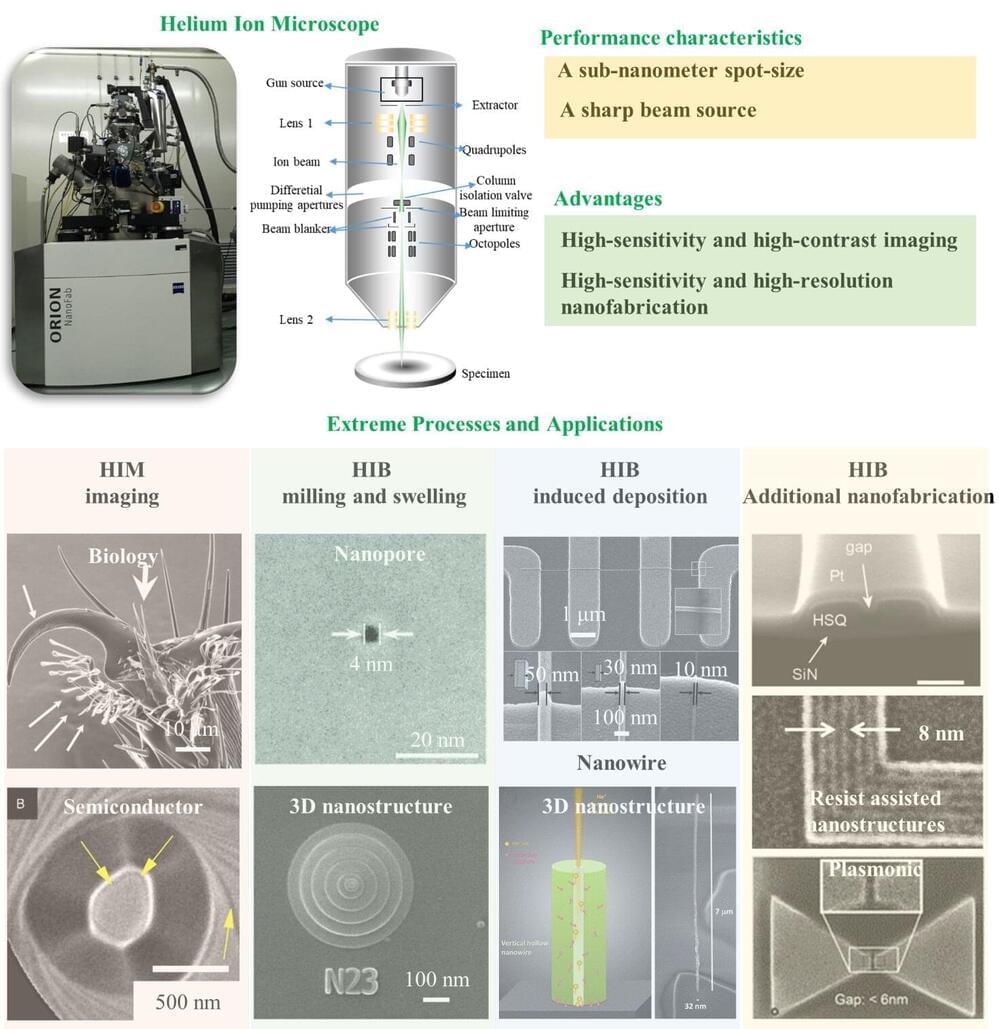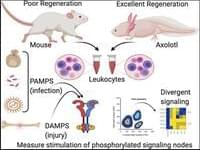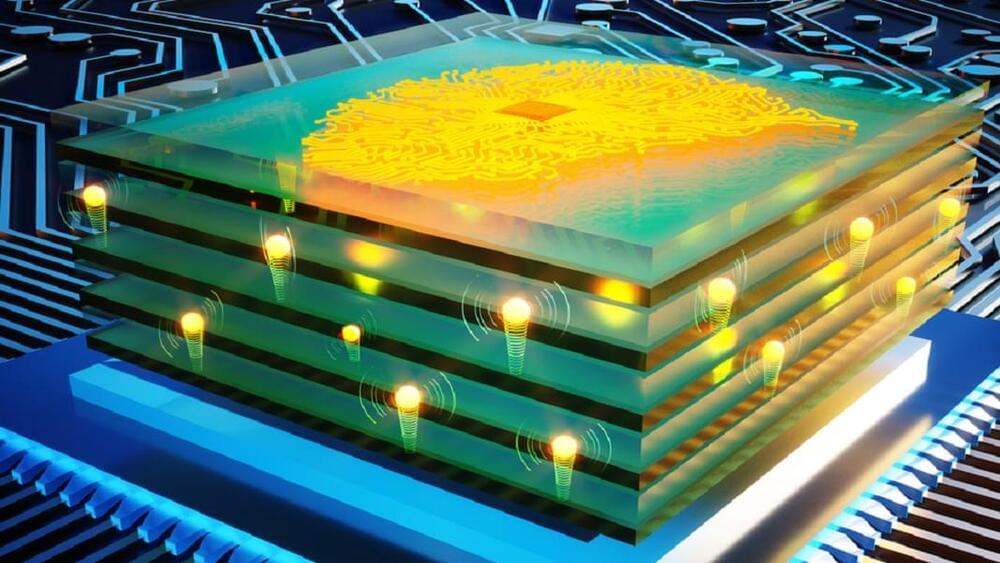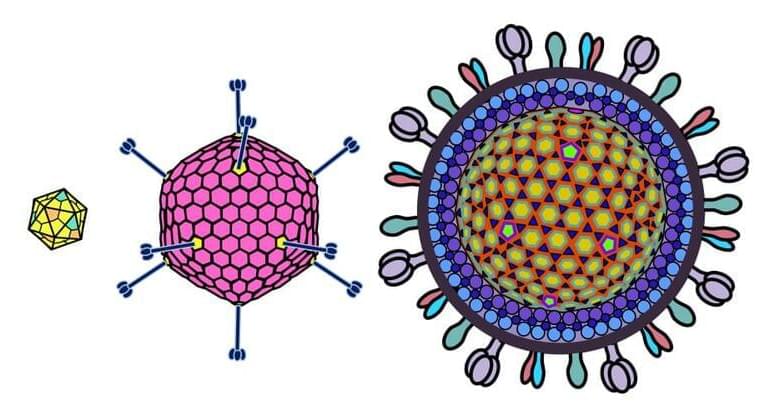Artificial intelligence has turned its power on deciphering the complex structures of proteins, the substances behind many vital processes in cells. It is a great boost for biology and, ultimately, wider society.



In recent years, material scientists have designed a wide range of innovative materials that could be used to create new technologies, including soft robots, controllers and smart textiles. These materials include artificial muscles, structures that resemble biological muscles in shape and that could improve the movements of robots or enable the creation of clothing that adapts to different environmental conditions.
As part of an ongoing project focused on textile-based soft actuators, a team of researchers at Jiangnan University in China recently developed new artificial muscles based on free-standing, single-helical woolen yarn. Their artificial muscles, introduced in a paper published in Smart Materials and Structures, could be used to easily and affordably produce twisted actuators that can detect and respond to humidity in their environment.
“We are trying to design flexible and versatile actuators by leveraging the hierarchical structure design of textiles, ranging from microscales (e.g., molecular chains and aggregation structures) to macroscales (e.g., fiber morphology and textile architectures),” Fengxin Sun, one of the researchers who carried out the study, told Tech Xplore. “Realizing a yarn-based artificial muscle with free-standing and single-helical architecture via eco-friendly and easy-fabrication manufacturing process is still challenging.”
From Alice in Wonderland to The Lord of the Rings, our stories have long depicted magical worlds hidden underground. Yet the most magical account of all might turn out to be reality, as scientists reveal a complex network of reactions between plants, fungi, bacteria, and more, interacting below the soil surface to support the foundations of life. At USDA’s Agricultural Research Service, one part of the research into this intricate underground world involves identifying techniques that will keep nitrogen—a vital element for plant growth—in the soil.
Like all good stories, this one has heroes and villains whose actions can wreak havoc or save us. When properly sequestered underground, some forms of nitrogen like ammonium and nitrate perform heroic feats, fertilizing the plants that we depend on for our food. Yet when they escape the soil in the wrong ways, they morph into closely-related super-villains malignant forms of nitrogen like nitrous oxide that, in the atmosphere, is 300 times more powerful than carbon dioxide in trapping heat, and lingers far longer. In fact, N2O is the largest source of greenhouse gas from agriculture. Escaped nitrogen can also get into groundwater or run off fields and into waterways; once there, it can fuel algae blooms in coastal waters that consume oxygen, harming fish and other aquatic creatures.
To keep nitrogen where it can do us the most good, a team of ARS scientists is developing new techniques for cover crop breeders. Their goal: to help the breeders identify plants whose extended underground root systems (known as the rhizosphere) are most effective at keeping nitrogen in the soil. The root systems, which include microbes that interact with the plants, secure nitrogen via a process called biological nitrification inhibition. Nitrification is a process in which nitrogen is transformed from one form, ammonium, to other forms, like nitrate. When the plants’ root systems inhibit that process, the nitrogen remains safely within the soil, benefiting plants—and those who eat them.

Helium ion beam (HIB) technology plays an important role in the extreme fields of nanofabrication. Due to high resolution and sensitivity, HIB nanofabrication technology is widely used to pattern nanostructures into components, devices, or systems in integrated circuits, materials sciences, nano-optics, and bio-sciences applications. HIB-based nanofabrication includes direct-write milling, ion beam-induced deposition, and direct-write lithography without the need to resist assistance. Their nanoscale applications have also been evaluated in the areas of integrated circuits, materials sciences, nano-optics, and biological sciences.
In a new paper published in the International Journal of Extreme Manufacturing, a team of researchers, led by Dr. Deqiang Wang from Chongqing Key Laboratory of Multi-scale Manufacturing Technology, Chongqing Institute of Green and Intelligent Technology, Chinese Academy of Sciences, PR China, have summarized comprehensively the extreme processes and applications of HIB nanofabrication.
The main aim of this review is to address the latest developments in HIB technology with their extreme processing capabilities and widespread applications in nanofabrication. Based on the introduction of the HIM system with GFIS, the performance characteristics and advantages of HIB technology have been discussed first. Thereafter, certain questions about the extreme processes and applications of HIB nanofabrication have been addressed: How many extreme processes and applications of HIB technology have been developed in nanofabrication for integrated circuits, materials sciences, nano-optics, and bio-sciences applications? What are the main challenges in the extreme nanofabrication with HIB technology for high resolution and sensitivity applications?

Circa 2021 This article states that humans have possibly an untapped regeneration ability and they may have found it in mice.
Using new phospho-flow cytometry techniques to measure signaling in individual cell subsets we compared mouse to salamander inflammation. These studies demonstrated evolutionarily conserved responses to PAMP ligands through toll-like receptors (TLRs) but identified key differences in response to DAMP ligands. Co-exposure of macrophages to DAMPs/PAMPs suppressed MAPK signaling in mammals, but not salamanders, which activate sustained MAPK stimulation in the presence of endogenous DAMPS.

Researchers have been trying to build artificial synapses for years in the hope of getting close to the unrivaled computational performance of the human brain. A new approach has now managed to design ones that are 1,000 times smaller and 10,000 times faster than their biological counterparts.
Despite the runaway success of deep learning over the past decade, this brain-inspired approach to AI faces the challenge that it is running on hardware that bears little resemblance to real brains. This is a big part of the reason why a human brain weighing just three pounds can pick up new tasks in seconds using the same amount of power as a light bulb, while training the largest neural networks takes weeks, megawatt hours of electricity, and racks of specialized processors.
That’s prompting growing interest in efforts to redesign the underlying hardware AI runs on. The idea is that by building computer chips whose components act more like natural neurons and synapses, we might be able to approach the extreme space and energy efficiency of the human brain. The hope is that these so-called “neuromorphic” processors could be much better suited to running AI than today’s computer chips.

Living organisms offer extensive diversity in terms of their phenotypes, metabolic processes, and adaptation to various niches. However, the basic building blocks that create this diversity are remarkably similar. How can we advance our understanding of the fascinating mechanisms that drive biological complexity and how can we harness biological components to build entirely new materials and devices?
A new Special Issue from ACS Synthetic Biology will focus on this dynamic topic, including contributions that deconstruct as well as build up and mimic biological systems. The resulting work serves both to test our scientific understanding and to extend known biology to develop new concepts and applications. The issue will be led by Associate Editor Michael Jewett with Guest Editors Kate Adamala, Marileen Dogterom, and Neha Kamat.
Patreon: https://www.patreon.com/mlst.
Discord: https://discord.gg/ESrGqhf5CB
The field of Artificial Intelligence was founded in the mid 1950s with the aim of constructing “thinking machines” — that is to say, computer systems with human-like general intelligence. Think of humanoid robots that not only look but act and think with intelligence equal to and ultimately greater than that of human beings. But in the intervening years, the field has drifted far from its ambitious old-fashioned roots.
Dr. Ben Goertzel is an artificial intelligence researcher, CEO and founder of SingularityNET. A project combining artificial intelligence and blockchain to democratize access to artificial intelligence. Ben seeks to fulfil the original ambitions of the field. Ben graduated with a PhD in Mathematics from Temple University in 1990. Ben’s approach to AGI over many decades now has been inspired by many disciplines, but in particular from human cognitive psychology and computer science perspective. To date Ben’s work has been mostly theoretically-driven. Ben thinks that most of the deep learning approaches to AGI today try to model the brain. They may have a loose analogy to human neuroscience but they have not tried to derive the details of an AGI architecture from an overall conception of what a mind is. Ben thinks that what matters for creating human-level (or greater) intelligence is having the right information processing architecture, not the underlying mechanics via which the architecture is implemented.
Ben thinks that there is a certain set of key cognitive processes and interactions that AGI systems must implement explicitly such as; working and long-term memory, deliberative and reactive processing, perc biological systems tend to be messy, complex and integrative; searching for a single “algorithm of general intelligence” is an inappropriate attempt to project the aesthetics of physics or theoretical computer science into a qualitatively different domain.
Panel: Dr. Tim Scarfe, Dr. Yannic Kilcher, Dr. Keith Duggar.
Pod version: https://anchor.fm/machinelearningstreettalk/episodes/58-Dr–…e-e15p20i.
Artificial Intelligence is pretty much THE HOLY GRAIL of Future Technologies.
There is no big Company nor University, which is not working on the development of Artificial Intelligence.
Role models are often the superior performance of the biological brain, but that’s also a lot of work.
So a development team in Australia therefore wants to save tedious development time and insert brain cells into Computers!
You may think that sounds crazy?
But their first prototype is already learning faster than traditional Artificial Intelligences of computers.
How did they even do that? This is exactly what we will talk about in this video.

The Virus Zoo is my latest educational blog post! I’ve written up ~1 page ‘cheat sheets’ on the molecular biology of specific viruses. I cover genome, structure, and life cycle. So far, my zoo includes adeno-associated virus (AAV), adenovirus, and herpes simplex virus 1 (HSV-1). However, I plan to add more viruses as time goes on! Some others I would like to incorporate later are coronavirus, HIV, anellovirus, lentivirus, ebolavirus, and MS2 bacteriophage. Feel free to suggest other interesting viruses in the comments! All images were created by me. #virology #molecularbiology #biotechnology #genetherapy #virus #biochemistry #genetics
Genome and Structure:
AAV genomes are about 4.7 kb in length and are composed of ssDNA. Inverted terminal repeats (ITRs) form hairpin structures at ends of the genome. These ITR structures are important for AAV genomic packaging and replication. Rep genes (encoded via overlapping reading frames) include Rep78, Rep68, Rep52, Rep40.1 These proteins facilitate replication of the viral genome. As a Dependoparvovirus, additional helper functions from adenovirus (or certain other viruses) are needed for AAVs to replicate.
AAV capsids are about 25 nm in diameter. Cap genes include VP1, VP2, VP3 and are transcribed from overlapping reading frames.2 The VP3 protein is the smallest capsid protein. The VP2 protein is the same as VP3 except that it includes an N-terminal extension with a nuclear localization sequence. The VP1 protein is the same as VP2 except that it includes a further N-terminal extension encoding a phospholipase A2 (PLA2) that facilitates endosomal escape during infection. In the AAV capsid, VP1, VP2, and VP3 are present at a ratio of roughly 1:1:10. It should be noted that this ratio is actually the average of a distribution, not a fixed number.